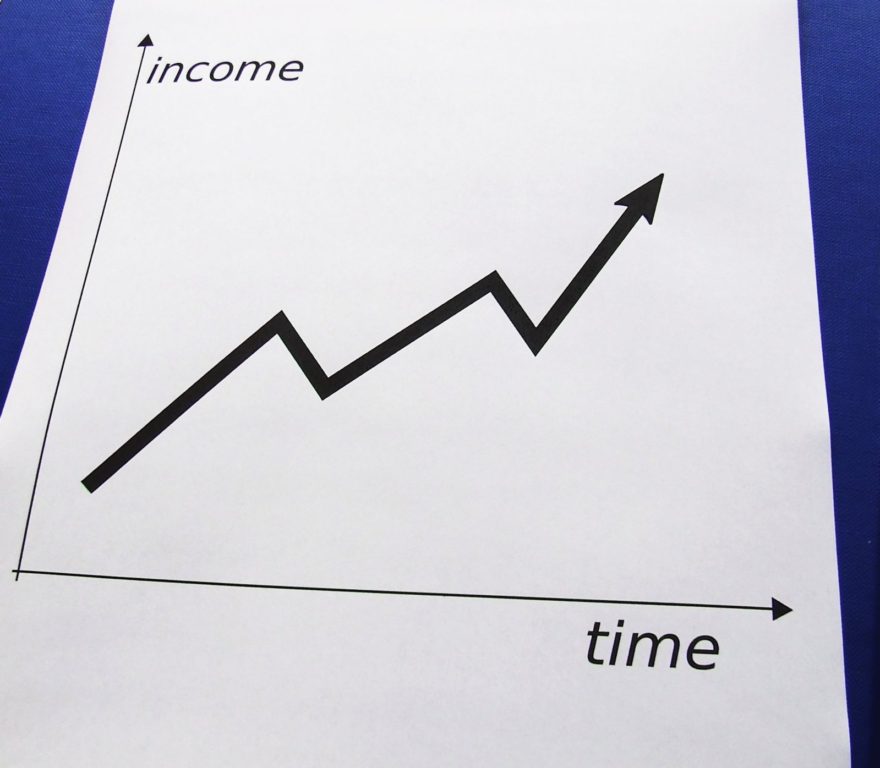One of the key questions facing investors is “What percentage should you save of your income?” People like a quick rule of thumb, and so you will often hear “10%” as an answer. This is an easy round number, a mental shortcut, and feasible for most people. Unfortunately, it is also a sloppy, lazy, and inaccurate answer. 10% is better than nothing, but does 10% guarantee you will have a comfortable retirement?
I created a spreadsheet to show you two things. Firstly, how much you would accumulate over your working years. This is based on the years of saving, rate of return, and inflation (or how much your salary grows). Secondly, how much this portfolio could provide in retirement income and how much of your pre-retirement salary it would replace.
The fact is that there can be no one answer to the question of what percentage you should save. For example, are you starting at 25 or 45? In other words, are you saving for 40 years or 20 years? Are you earning 7% or 1%? When you change any of these inputs you will get a wildly different result.
10% from age 25
Let’s start with a base case of someone who gets a job at age 25. He or she contributes 10% of their salary to their 401(k) every year until retirement. They work for 40 years, until age 65, and then retire. Along the way, their income increases by 2.5% a year. Their 401(k) grows at 7%. All of these are assumptions, not guaranteed returns, but are possible, at least historically.
In Year 1, let’s say their salary is $50,000. At 10%, they save $5,000 into their 401(k) and have a $5,000 portfolio at the end of the year. In Year 2, we would then assume their salary has grown to $51,250. Their 401(k) grows and they contribute 10% of their new salary. Their 401(k) has $10,475 at the end of Year 2.
We continue this year by year through Year 40. At this point, their salary is $130,978, and they are still contributing 10%. At the end of the year, their 401(k) would be $1,365,488. That’s what you’d have if you save 10% of your 40 years of earnings and grow at 7% a year. Not bad! Certainly most people would feel great to have $1.3 million as their nest egg at age 65.
How much can you withdraw once you retire? 4% remains a safe answer, because you need to increase your withdrawals for inflation once you are in retirement. 4% of $1,365,488 is $54,619. How much of your salary will this replace? The answer is 41.7%. We can change the amount of your starting salary, but the answer will remain the same. With these factors (10% contributions, 2.5% wage growth, 7% rate of return, and 40 years), your portfolio would replace 41.7% of your final salary. That’s it! That could be a big cut in your lifestyle.
What percentage should you replace?
41.7% sounds like a really low number, but you don’t necessarily have to replace 100% of your pre-retirement income. To get a more accurate number of what you need, we would subtract the following savings:
- You weren’t spending the 10% you saved each year to your 401(k)
- 7.65% saved on FICA taxes versus wage income
- Some percentage saved on income taxes, depending on your pre- and post-retirement income.
- Your Social Security Benefit and/or Pension Income
- Have you paid off your mortgage, or have other expenses that will be eliminated in retirement?
Many people will only need 75% to 80% of their final salary in retirement income to maintain the same standard of living. If their Social Security benefit covers another 20%, then they would only need a replacement rate of 55% to 60% from their 401(k).
Time Value of Money
The biggest factor in compounding is time. In our original example of 40 years of accumulation, the final portfolio amount was $1,365,488. However, what if you only save for 30 years? Maybe you didn’t start investing until 35. Perhaps you want to retire at age 55 and not 65? Either way, at the 30 year mark, the portfolio would have grown to $666,122. By saving for another 10 years, your accumulation will more than double to $1.365 million.
Here’s a chart that is perhaps a more useful answer to the question of what percentage you should save. It depends on how many years you will save and what percentage of your income you want to replace.
| Income Replacement | 50% | 60% | 70% |
| in 40 Years | 12.0% | 14.4% | 16.8% |
| in 35 Years | 15.7% | 18.8% | 22.0% |
| in 30 Years | 20.9% | 25.1% | 29.2% |
| in 25 Years | 28.5% | 34.2% | 39.9% |
| in 20 Years | 40.3% | 48.4% | 56.4% |
How do you read this? If you want to replace 50% of your income in 40 years from now, starting at zero dollars, you need to save 12% of your income. Actually, this is pretty close to the 10% rule of thumb. But no one says “If you are starting at age 25 and are planning to save for the next 40 years, 10% is a good rule of thumb”. What if you are starting later? Or, what if you want to have your portfolio replace more than 50% of your income.
As you reduce the accumulation period, you need a higher contribution rate. For example, at the 50% replacement level, your required contribution increases from 12% to 15.7% to 20.9% as you go from 40 to 35 to 30 Years. And if you are planning to retire in 20 years and have not started, you would need to save 40.3%.
Similarly, if you want your portfolio to replace more than 50% of your income, the percent to contribute increases as you stretch to 60% or 70%. These figures are quite daunting, and admittedly unrealistic. But one thing that may help slightly will be a company match. If you contribute 10% and your company matches 4% of your salary, you are actually at 14%. Don’t forget to include that amount!
What can you do?
We’ve made some conservative assumptions and perhaps things will go even better than we calculated. For example, if you achieve an 8% return instead of 7%, these contribution requirements would be lower. Or if the inflation rate is lower than 2.5%. Or if you can withdraw more than 4% in retirement. All of those “levers” would move the contribution rate lower. Of course, this cuts both ways. The required contribution rate could be higher (even worse), if your return is less than 7%, inflation higher than 2.5%, or safe withdrawal rate less than 4%.
If you want to consider these factors in more detail, please read the following articles:
If you’d like to play around with the spreadsheet, drop me an email ([email protected]) and I’ll send it to you, no charge. Then you can enter your own income and other inputs and see how it might work for you. While our example is based on someone who is starting from zero, hopefully, you are not! You can also change the portfolio starting value to today’s figures on the spreadsheet.
The key is this: Begin with the End in Mind. The question of What percentage should you save depends on how long you will accumulate and what percent of income you want to replace in retirement. Saving 10% is not a goal – it’s an input rather than an outcome. Having $1.3 million in 40 years or $2.4 million in 35 years is a tangible goal. Then we can calculate how much to save and what rate of return is necessary to achieve that goal. That’s the start of a real plan.
You don’t have to try to figure this out on your own. I can help. Here’s my calendar. You are invited to schedule a free 30 minute call to discuss your situation in more detail. After that, you can determine if you’d like to work with me as your financial advisor. Sometimes, it isn’t the right fit or the right time, and that’s fine too. I am still happy to chat, answer your questions, and share whatever value or information I can. But don’t use a Rule of Thumb, get an answer that is right for your personal situation.







![IMG_9663[1]](https://goodlifewealth.com/wp-content/uploads/2014/08/IMG_96631-1024x682.jpg)

